Understanding the Ubiquitous 0.1 uF Capacitor: A Deep Dive
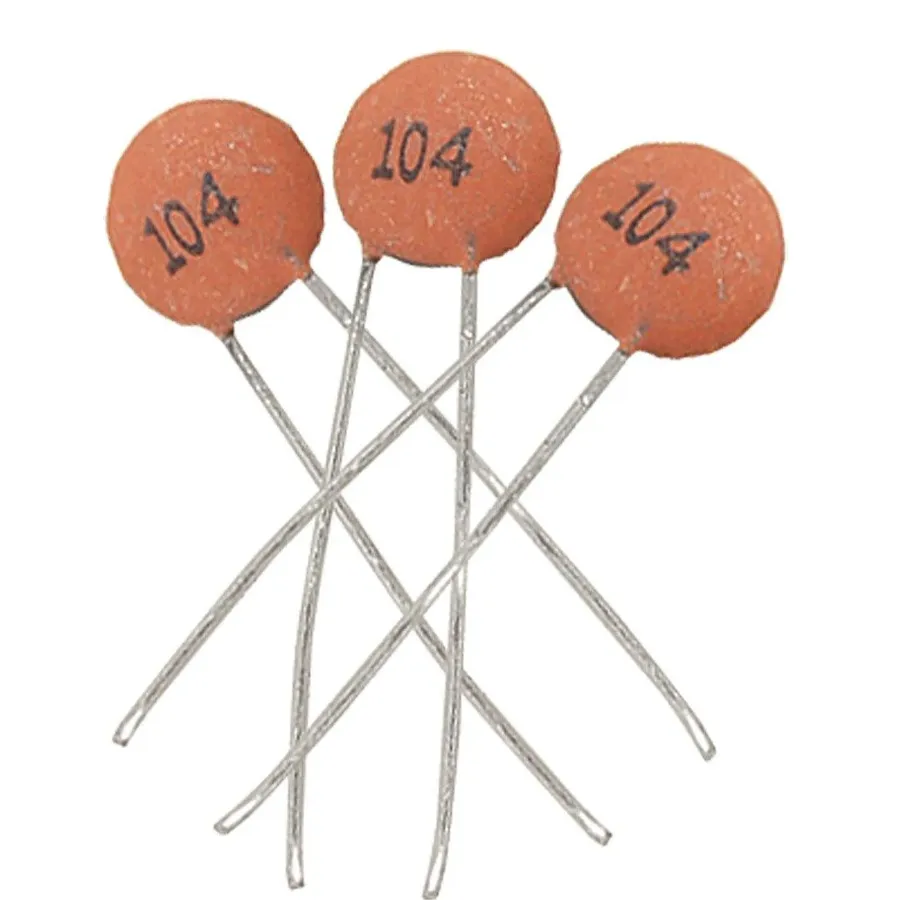
In the world of electronics, a tiny component often plays a pivotal role: the 0.1 uF capacitor. Like the silent guardians of our devices, these capacitors ensure stable operation by filtering out unwanted noise. From smartphones to complex industrial machinery, understanding the 0.1 uF capacitor is essential for anyone diving into the fascinating realm of circuits and electrical engineering. This article demystifies this ubiquitous component and its vital role.
What is a 0.1 uF Capacitor?

A 0.1 uF capacitor, also denoted as 0.1 microfarad or 100 nanofarad (100nF), is a fundamental passive electronic component designed to store electrical energy within an electric field. This specific capacitance value is widely utilized in diverse applications, with a primary focus on decoupling and bypassing high-frequency noise in electronic circuits.
The Role of 0.1 uF Capacitors: Decoupling and Bypassing
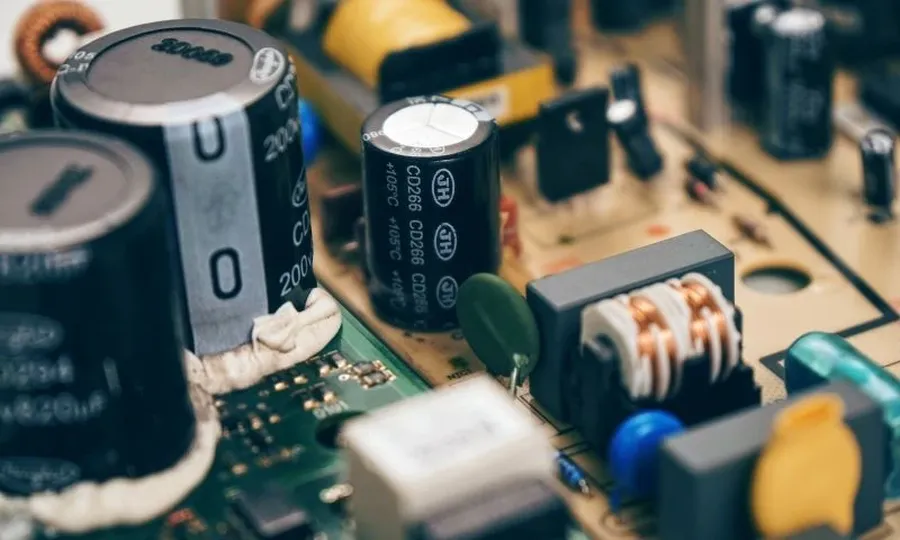
0.1 uF capacitors are fundamental in electronic circuit design, primarily functioning as decoupling capacitors in power distribution networks. They serve as miniature energy reservoirs placed strategically near integrated circuits (ICs) to mitigate voltage fluctuations and high-frequency noise, ensuring stable and reliable operation of sensitive electronic components. This role of 'decoupling' is crucial for preventing power supply noise from propagating into the ICs and causing signal corruption.
When a digital circuit switches states, it draws current in rapid pulses, causing voltage fluctuations on the power supply line. Without decoupling capacitors, these fluctuations can cause unstable behavior of the IC and its neighboring components. By placing a 0.1uF capacitor close to the power pin of an IC, it acts like a local charge storage, smoothing out the voltage spikes, and providing a stable voltage rail for the IC to operate. This ensures that other circuits connected to the same power source are isolated from those voltage transients, hence decoupling.
In addition to decoupling, 0.1 uF capacitors are also used for bypassing high-frequency signals to ground. These capacitors present a low impedance path for high frequency noise signals to go to ground, reducing the impact of this noise on the desired signals. This function is particularly useful in high-speed digital circuits where parasitic capacitances and inductances can cause unwanted interference.
The effectiveness of a 0.1uF capacitor is directly related to its proximity to the IC's power pin. The shorter the trace length, the lower the inductance, and the more efficient the decoupling. These concepts of decoupling and bypassing are foundational for ensuring reliable and noise-free operation of many digital and analog electronic circuits.
Types of 0.1 uF Capacitors
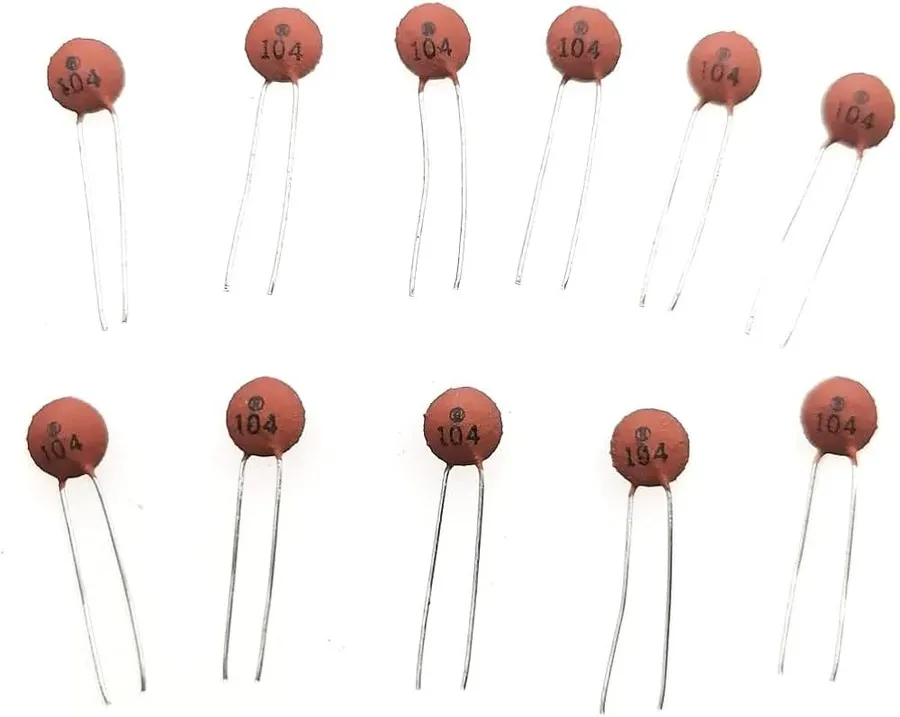
While all 0.1 uF capacitors share the same capacitance value, their physical and material characteristics vary significantly, impacting their suitability for different applications. These variations include the dielectric material, construction method, and physical size. For decoupling applications, ceramic capacitors are often preferred, but other types might be more appropriate in other designs.
| Capacitor Type | Dielectric Material | Key Characteristics | Typical Applications | Suitability for Decoupling |
|---|---|---|---|---|
| Ceramic Capacitors | Ceramic (e.g., X7R, C0G/NP0) | Small size, good high-frequency response, low cost | Decoupling, bypassing, general-purpose | Excellent |
| Film Capacitors | Polyester, polypropylene | Better temperature stability, higher voltage ratings, good accuracy | Power supplies, audio circuits, high-precision applications | Good for high power decoupling, not a first choice for general purpose |
| Electrolytic Capacitors | Aluminum oxide, tantalum pentoxide | High capacitance values, polarized, higher ESR, larger size | Bulk energy storage, power supply filtering, not good for high-frequency decoupling | Not suitable for high-frequency decoupling |
Why 0.1 uF? The Standard Value for Decoupling
The prevalence of the 0.1 uF capacitor in decoupling applications is not arbitrary; it arises from a careful balance of practical considerations and engineering requirements. This value effectively addresses the need to filter out high-frequency noise while also storing enough charge to respond to transient power fluctuations. It's a standard choice close to the VCC pin of integrated circuits, ensuring stable and reliable operation.
The selection of 0.1uF as a standard decoupling capacitor is due to the following key reasons:
- High-Frequency Filtering:
Lower capacitor values are generally more effective at filtering higher frequencies. 0.1uF offers good performance in the range of frequencies associated with switching noise in digital circuits. - Charge Storage:
While lower capacitance values are better for high frequencies, they also store less charge, which means they may not be able to supply adequate current during transient spikes. 0.1 uF represents a practical balance, storing enough charge to respond to quick fluctuations in demand. - Practicality and Availability:
The 0.1 uF value is readily available from most manufacturers, making it a cost-effective and accessible component for a wide range of applications. This widespread use has further solidified its position as a standard value. - Optimized for Typical Noise Frequencies:
Many digital circuits operate at frequencies where a 0.1uF capacitor is highly effective at filtering out noise. This makes it a good general-purpose solution. Specific applications that have much higher or lower frequencies require a case by case capacitor analysis.
While 0.1uF is a common standard, it's crucial to note that the ideal capacitor value can vary based on the specific needs of the circuit. More specialized designs may require different values, which may be higher or lower depending on the noise frequency range. A detailed analysis of the circuit requirements is needed before making an appropriate decision for specific high frequency filtering needs.
0.1 uF Capacitor Codes and Markings: Decoding 104
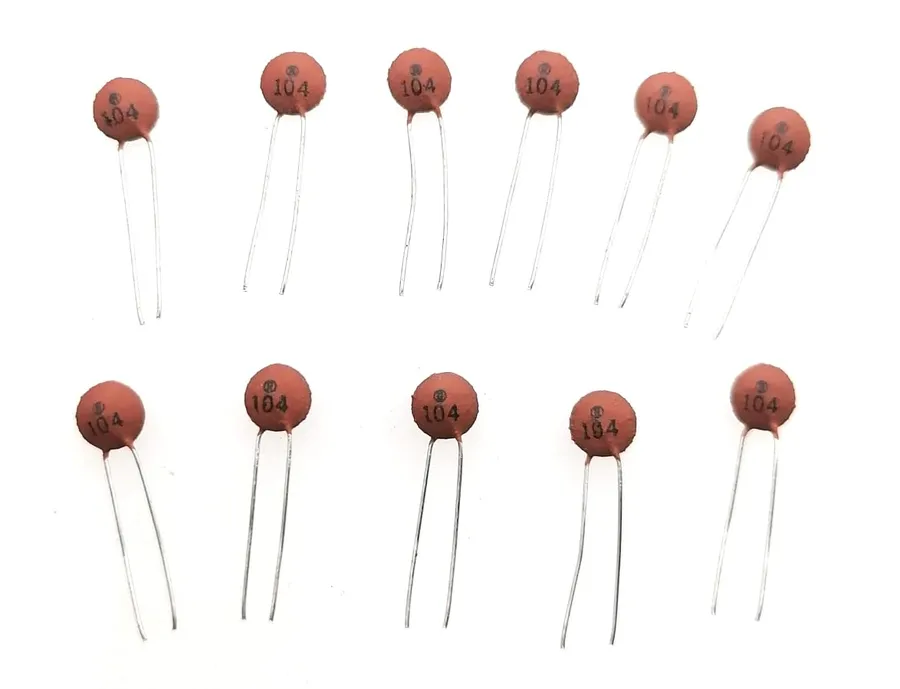
Ceramic capacitors, particularly those of smaller size, often employ a three-digit numerical code to denote their capacitance value, a practice stemming from space constraints and industry standardization. The '104' marking is a ubiquitous code found on 0.1 uF ceramic capacitors, signifying a capacitance of 100 nanofarads (nF), equivalent to 0.1 microfarads (uF), and understanding this coding system is essential for correct component identification and selection.
| Digit Code | Calculation | Result | Unit |
|---|---|---|---|
| 104 | 10 x 10^4 | 100,000 | picofarads (pF) |
| 100,000 pF / 1000 | 100 | nanofarads (nF) | |
| 100 nF / 1000 | 0.1 | microfarads (uF) |
The first two digits of the code represent the significant figures of the capacitance value, and the third digit specifies the multiplier, which is a power of ten. Consequently, a ‘104’ code translates to 10 multiplied by 10 to the power of 4, which equals 100,000 picofarads (pF). Conversion to nanofarads and microfarads is crucial for practical application, yielding 100nF or 0.1uF, respectively.
0.1 uF Capacitor Applications
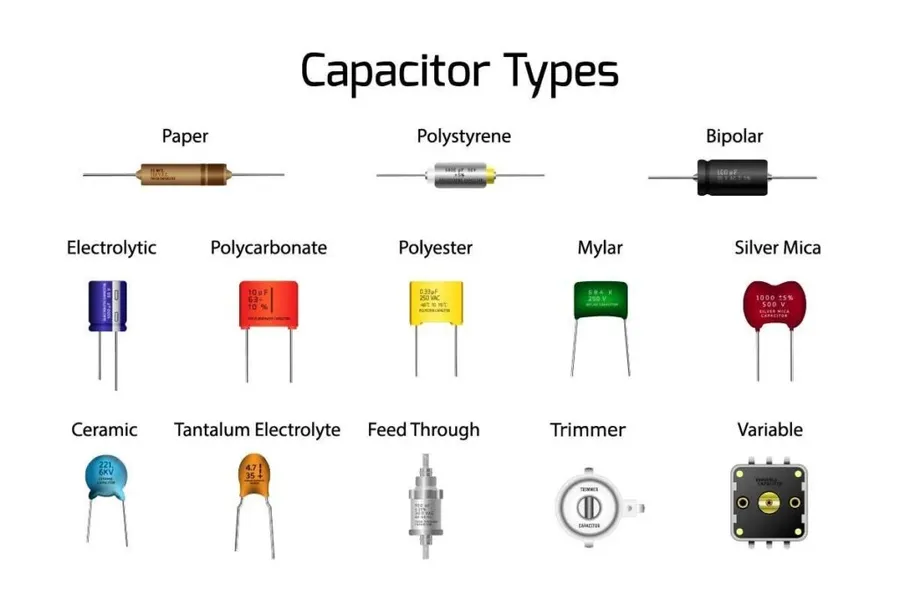
The 0.1 uF capacitor is a ubiquitous component in modern electronics, playing a crucial role in ensuring stable and reliable circuit operation. Its primary function revolves around mitigating noise and fluctuations in various electronic systems. These capacitors are integral in power distribution networks, signal processing, and timing applications.
- Decoupling Capacitors for Integrated Circuits (ICs)
Serving as a local energy reservoir, the 0.1 uF capacitor is placed close to the power supply pins of ICs. This proximity ensures a stable voltage supply, filtering out high-frequency noise and preventing performance degradation due to power fluctuations. This is crucial for digital circuits and microcontrollers operating at high speeds and frequencies where these fluctuations are present on the power rails of the PCB due to the rapid current draw and switching of internal IC logic. - Power Supply Filtering
Beyond IC decoupling, 0.1 uF capacitors are utilized in power supply circuits as part of filtering networks. They help to smooth out voltage ripples and other unwanted noise, providing a clean and stable power source for sensitive components further down the line. Here they are often used in conjunction with other types of larger value capacitors to filter out the full frequency spectrum of noise. - Signal Processing Noise Reduction
In signal processing applications, these capacitors help mitigate unwanted noise or interference. They act as a low-impedance path for high-frequency noise, shunting it to ground and maintaining the integrity of the signal. This is especially important in high sensitivity analog circuits where signal to noise ratios are of utmost importance to the application. - Timing Circuits
While not its most common use, 0.1 uF capacitors can play a role in timing circuits. Combined with resistors, they form RC circuits to generate time delays or oscillations in basic circuit applications. Note that due to the tolerance of ceramic capacitors, they are not preferred for precise and accurate timing applications, where other types of capacitors with lower tolerances are preferred, such as film or tantalum capacitors.
Selecting the Right 0.1 uF Capacitor
Selecting the appropriate 0.1 uF capacitor is crucial for optimal circuit performance. This process involves considering several key electrical and physical parameters to ensure the capacitor functions effectively within its intended environment and application. The primary concerns revolve around voltage, temperature, tolerance, size, and material composition, each of which impacts the capacitor's operational characteristics and suitability.
| Parameter | Description | Selection Considerations |
|---|---|---|
| Voltage Rating | The maximum voltage the capacitor can safely handle without dielectric breakdown. | Choose a rating at least twice the circuit's operating voltage to ensure reliability and safety margin. |
| Temperature Rating | The range of temperatures within which the capacitor will operate reliably. | Select a capacitor rated for the temperature range of the application's environment. Exceeding this range may cause damage or performance issues. |
| Tolerance | The permissible deviation from the nominal 0.1uF capacitance value. | Tighter tolerances are essential for precision applications where small variations in capacitance can have significant impacts. |
| Physical Size | The dimensions and case size of the capacitor. | Ensure the capacitor's physical dimensions match the available PCB footprint and space constraints. This includes both surface mount (SMD) and through-hole components. |
| Material Type | The dielectric material used in the capacitor construction, such as ceramic, film, or electrolytic. | For decoupling applications, ceramic capacitors (particularly multilayer ceramic capacitors - MLCCs) are typically preferred due to their excellent high-frequency characteristics. Film capacitors are suitable for situations requiring higher voltage or better temperature stability. Electrolytic types are usually unsuitable for decoupling because of their construction and higher ESR. |
Frequently Asked Questions About 0.1 uF Capacitors
This section addresses common queries about 0.1 uF capacitors, clarifying their function, identification, and usage in electronic circuits. Understanding these aspects is crucial for effective circuit design and troubleshooting.
- What is the primary function of a 0.1 uF capacitor?
0.1 uF capacitors are primarily used for decoupling power supplies in electronic circuits. They act as local energy reservoirs, stabilizing voltage levels and filtering out high-frequency noise that can disrupt the operation of integrated circuits (ICs). - Why is the 0.1 uF capacitor value so common for decoupling?
The 0.1 uF value (or 100 nF) strikes a balance between providing sufficient charge storage for effective decoupling and offering good performance in filtering high frequencies, which are common in digital circuits. This makes it an ideal choice for general-purpose decoupling in digital and analog electronics. - What does the '104' code on a ceramic capacitor signify?
The code '104' on a ceramic capacitor indicates its capacitance value. The '10' represents the base value, and '4' represents the multiplier, which is 10 raised to the power of 4. Therefore, '104' is equal to 10 * 10^4 picofarads (pF), or 100,000 pF, which is equivalent to 100 nanofarads (nF) or 0.1 microfarads (uF). - Can a capacitor with a lower capacitance value be used in place of a 0.1 uF capacitor?
While a lower capacitance value might function in some situations, it is generally not recommended to replace a 0.1 uF capacitor with a lower value when used for decoupling, as this could lead to unstable circuit operation and reduced noise filtering. Decoupling needs to work well across a wide frequency spectrum, and usually, a smaller value capacitor will not be as effective for lower frequencies. Using a larger value, might take more space, but a larger value will typically function better for a wide spectrum of frequencies and may be acceptable. Careful analysis must be carried out, before choosing a lower value. - Is there a difference between 0.1 uF and 100 nF?
No, 0.1 microfarads (uF) and 100 nanofarads (nF) represent the same capacitance value. 100 nF is simply the equivalent of 0.1 uF using a different unit of measure. The choice between them is based on convenience and preference when expressing values in various circuit design contexts. - What considerations are needed when choosing a 0.1uF capacitor for a specific application?
When selecting a 0.1uF capacitor, important factors include the voltage rating, which should be at least twice the circuit's operating voltage; the temperature rating to ensure reliable operation within the application's environmental range; the tolerance to meet the required capacitance precision; the physical size and case style that fits the available board space, and also the material type such as ceramic, film etc. to meet the noise sensitivity requirements, and high frequency response needed for the application. - Are 0.1uF capacitors used for timing circuits?
While 0.1uF capacitors can be used in timing circuits, they're not typically the first choice for precision timing. Their primary strength is in decoupling and noise filtering due to their good high-frequency performance and availability. For precision timing, larger capacitor values may be used depending on the application.
0.1 uF Capacitor vs. Other Decoupling Values
While the 0.1 uF capacitor is a ubiquitous choice for decoupling, it's crucial to recognize that it's not a universal solution. The optimal capacitor value for decoupling is dependent on the frequency range of the noise being targeted for suppression. Lower capacitance values are generally more effective at attenuating higher frequency noise, which may lead to the selection of different capacitor values depending on the specific application. The selection of capacitance is a matter of balancing the need to filter high frequencies and the need to store sufficient charge to respond to power spikes.
| Capacitance Value | Typical Use Case | Frequency Range Effectiveness | Notes |
|---|---|---|---|
| 1 nF | High-speed digital circuits, very high frequency noise | Very High | Effective for very fast signal transitions and high frequency noise |
| 10 nF | High-speed digital circuits, higher frequency noise | High | Good for suppressing high frequency transients. |
| 0.1 uF (100 nF) | General-purpose decoupling, microcontroller applications | Medium | Standard for decoupling most digital circuits. |
| 1 uF | Lower frequency noise, bulk decoupling | Low | Better at lower frequencies and typically used in parallel with lower values for wide frequency coverage |
| 10 uF or higher | Bulk capacitance for power supply stabilization | Very Low | Used to maintain a stable voltage rail and are not effective for high frequency filtering |
Selecting the optimal decoupling capacitor requires a thorough understanding of the target system's noise profile. The frequency of the noise and the current demand requirements of the device should be carefully considered before making the selection.
The 0.1 uF capacitor is a small but mighty workhorse in electronics. Its primary role in decoupling and bypassing ensures stable operation by smoothing out power variations and filtering noise. While other capacitor values are available, the 0.1uf remains a common and indispensable part of countless electronic designs due to its effectiveness in high-frequency applications and ease of integration. As technology advances, the 0.1 uF capacitor will continue to play a vital role in ensuring our electronics perform reliably, and understanding its role will be essential for anyone looking to design stable and effective circuits.
 AnyPCBA
AnyPCBA